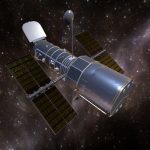Key Takeaways:
- Astronomers discovered a 1.3 km radius object, the first confirmed object of this size in the Edgeworth-Kuiper Belt.
- These kilometer-sized objects were long theorized to exist and are believed to be a crucial step between dust/ice clumps and full-fledged planets.
- Objects in this distant belt are well-preserved remnants of the early Solar System, offering insights into its formation.
- The discovery was made using a low-budget method (occultation) with small telescopes, highlighting the potential of creative approaches.
- This finding suggests a larger population of small Kuiper Belt Objects and opens doors for further exploration of this region and the Oort Cloud.
A body with a radius of 1.3 km has been discovered by astronomers at the edge of the Solar System for the first time ever. For over 70 years, bodies the size of kilometers have been predicted to exist, similar to the one that was discovered. Between the tiny original combinations of dust and ice and the planets we see today, these objects played a crucial role in the planet formation process.
An asteroid belt located outside of Neptune’s orbit is called the Edgeworth-Kuiper Belt. Pluto is the most well-known object in the Edgeworth-Kuiper Belt. Edgeworth-Kuiper Belt Objects are believed to be remnants left over from the formation of the Solar System. Small bodies in the cold, dark, and lonely Edgeworth-Kuiper Belt keep the ideal conditions of the early Solar System, while asteroids and other small bodies in the inner Solar System have been shaped over time by solar radiation, collisions, and the planets’ gravity. As a result, astronomers research them to discover more about the origins of planet formation.
Edgeworth-Kuiper Belt Objects with radii from 1 kilometer to several kilometers have been predicted to exist, but they are too distant, small, and dim for even world-leading telescopes, like the Subaru Telescope, to observe directly. So a research team led by Ko Arimatsu at the National Astronomical Observatory of Japan used a technique known as occultation: monitoring a large number of stars and watching for the shadow of an object passing in front of one of the stars. Two small (28 cm) telescopes were installed on the roof of the Miyako open-air school in Miyakojima-shi, Okinawa Prefecture, Japan by the OASES (Organized Autotelescopes for Serendipitous Event Survey) team. For a total of 60 hours, the telescopes observed about two thousand stars.
After analyzing the data, the researchers discovered an event that was consistent with a star appearing to dim due to an Edgeworth-Kuiper Belt object with a radius of 1.3 km. This discovery suggests that the number of Edgeworth-Kuiper Belt Objects larger than a kilometer is higher than previously believed. This is consistent with models in which planetesimals grow slowly at first into objects the size of kilometers, and then merge into planets due to runaway growth.
“This is a real victory for little projects,” says Arimatsu. Less than 0.3% of the funds allocated to major international projects went to our team. We didn’t even have enough money to build a second dome to protect our second telescope! Nevertheless, we succeeded in making a discovery that is impossible for large-scale undertakings. Now that we know our system works, we will investigate the Edgeworth-Kuiper Belt in more detail. We also have our sights set on the still undiscovered Oort Cloud out beyond that.”
This research appeared in Nature Astronomy (K. Arimatsu et al. ‘A kilometre-sized Kuiper belt object discovered by stellar occultation using amateur telescopes’). This research was made possible by grants-in-aid from the Japan Society for the Promotion of Science and the support of the Miyako open-air school and the local community in Miyakojima-shi.


